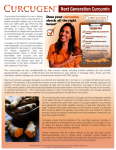Whole, natural fiber works best to protect gut mucosal layer, researcher says
It has long been known that the gut stays healthier and performs better with adequate fiber. But why? This is one of the questions that informed the research conducted by Dr Eric Martens, assistant professor of microbiology and immunology at the University of Michigan. Martens presented his research at the IPA World Congress + Probiota Americas event, which was hosted by William Reed in Chicago last week. The event brought together 280 regulators, probiotics and prebiotics researchers and product developers. Next year's event will take place in San Francisco, June 7-9.
Protecting the mucosal layer
Martens said that his research showed that without adequate fiber in the gut, some organisms that might be nourished by that food source will look to alternative sources, one of which is the gut’s mucosal layer. That layer is a critical component of the gut wall, and when it is eroded or absent harmful bacteria have an opportunity to latch onto the cells of the wall itself.
“The core of our research is we are interested in the physiology of the many bacteria that live in the gut and defining at the functional and mechanistic level how they work with goal of understanding how the community works,” Martens said.
The study he presented used 14 different bacteria with defined characteristics in a mouse model. The study had three groups, a group fed a fiber free diet, one with a whole grain diet rich in natural fibers, and a third that had fiber added back in in the form of purified, prebiotic fibers. His research found that the whole grain, natural fibers fostered a microbial community in which the muscosa-eroding organisms were suppressed the best. He postulated that this could be because the large, whole food particles typical of the natural fiber diet were best able to reach the distal regions of the gut and affect the microbial community makeup there, whereas the purified fibers may have been mostly digested by that point.

















